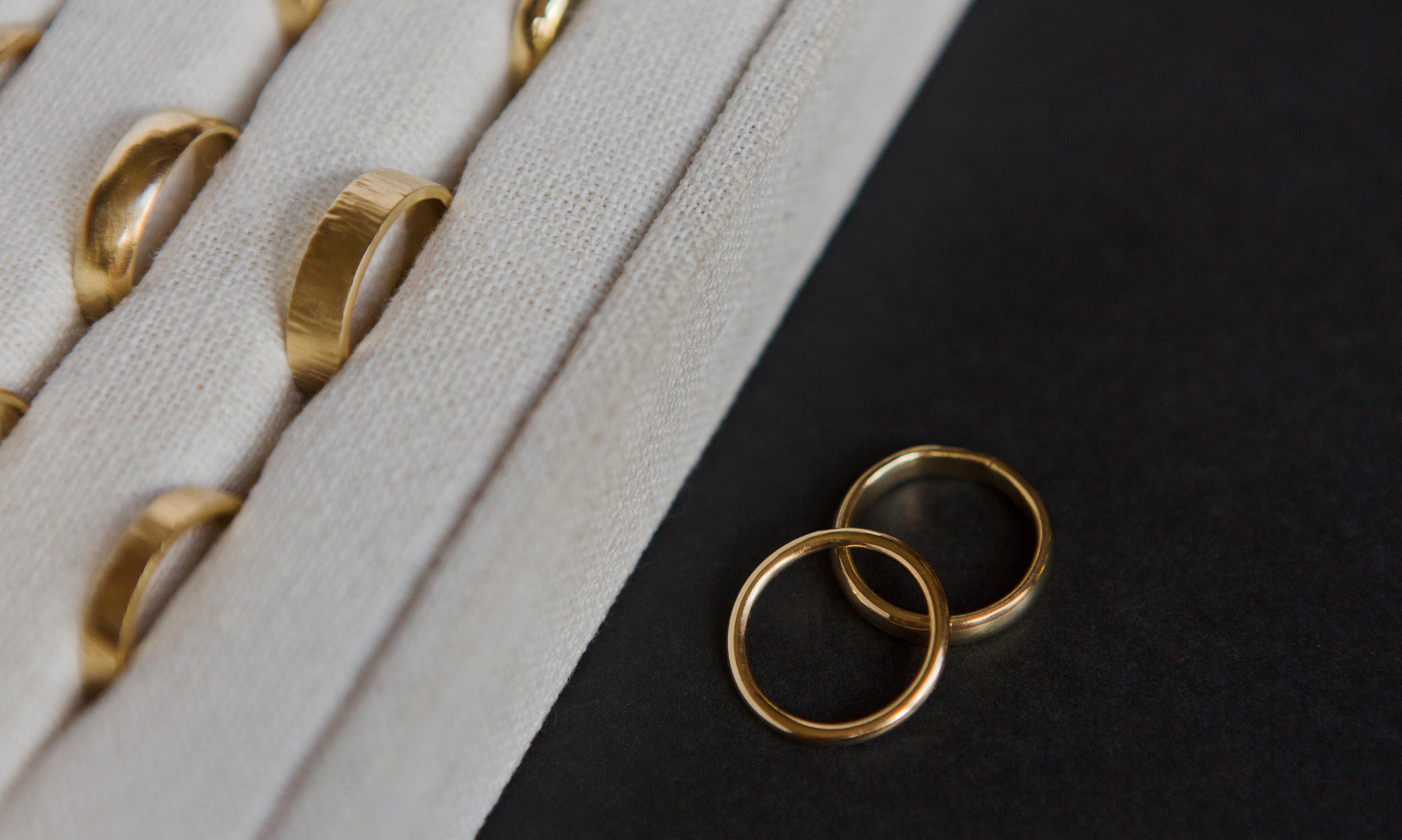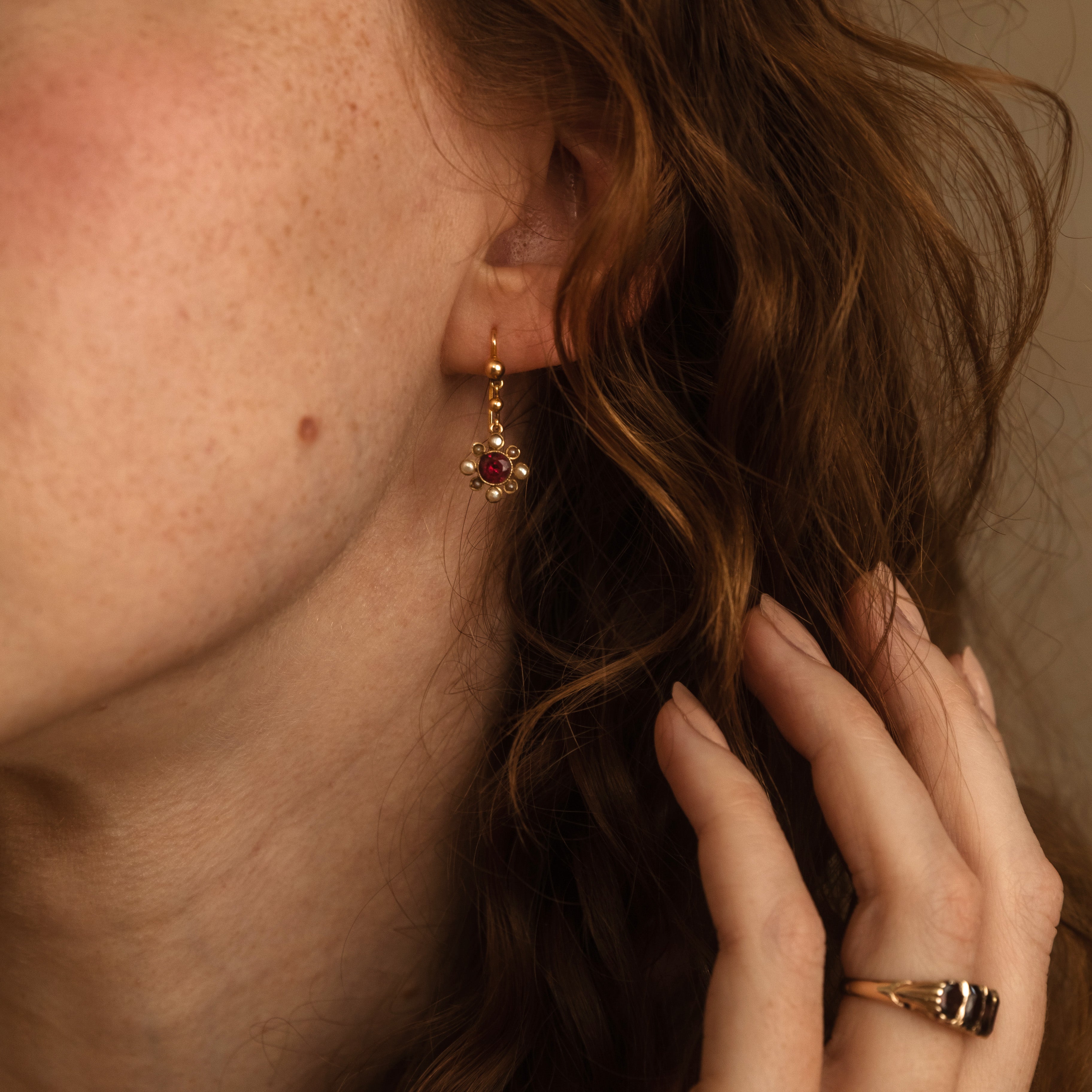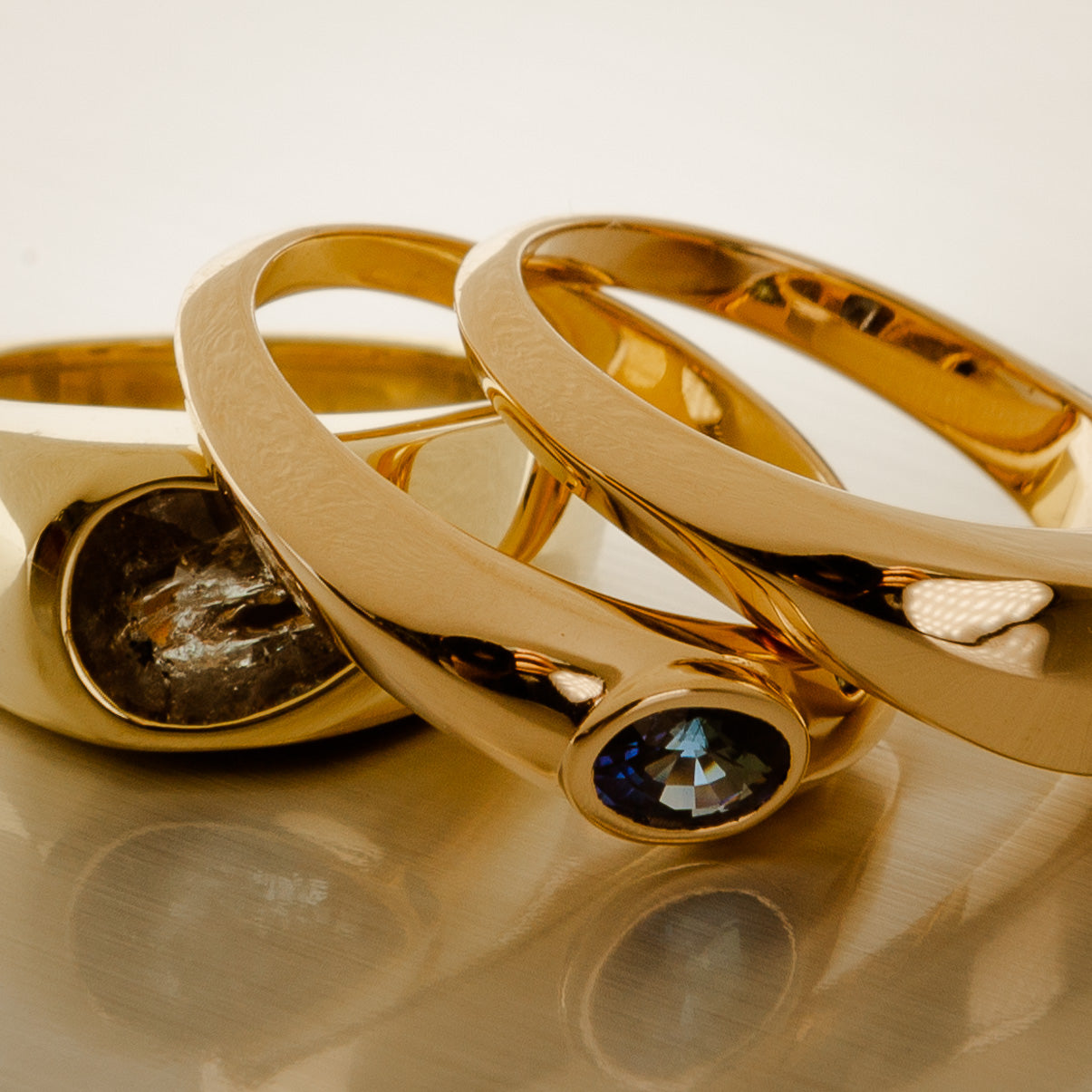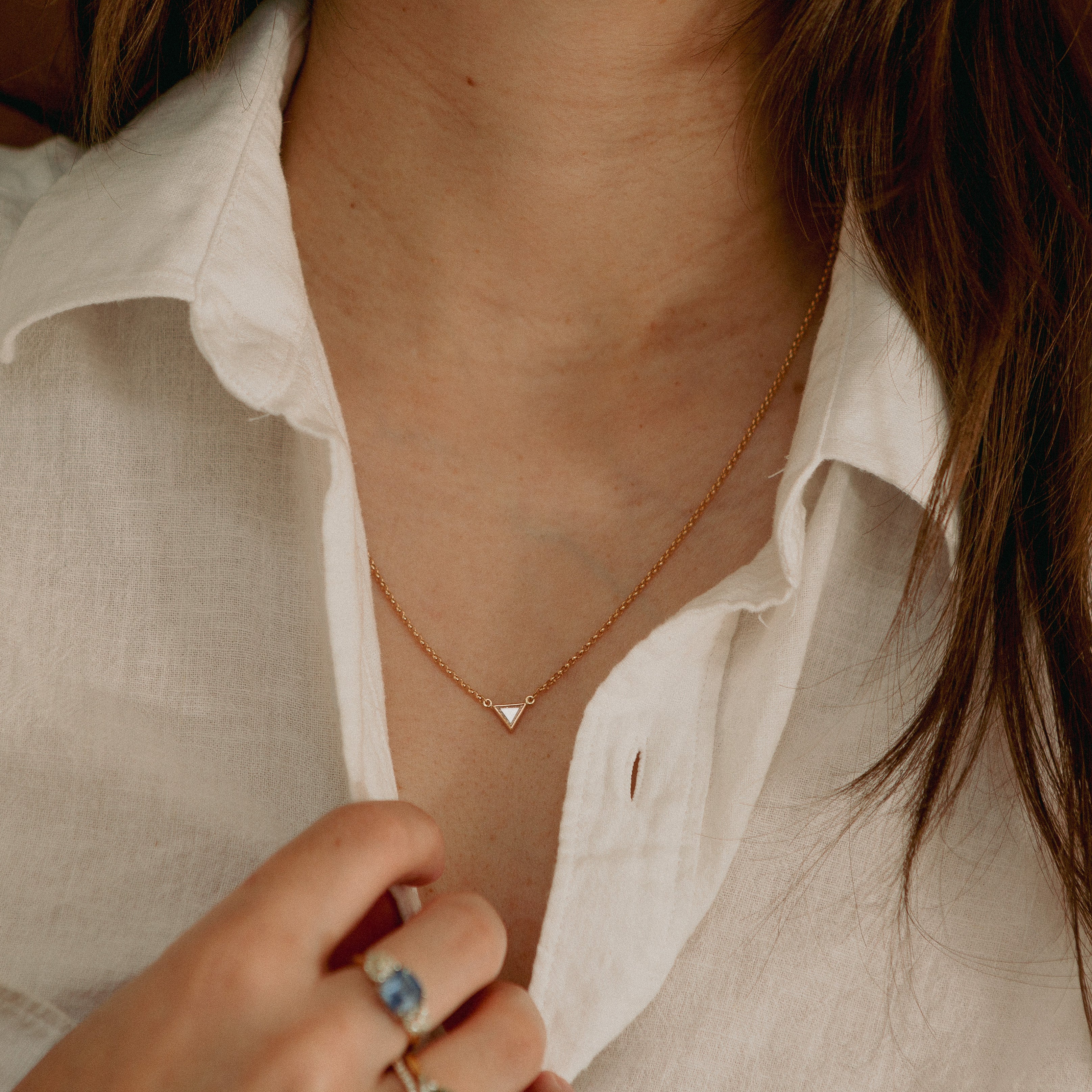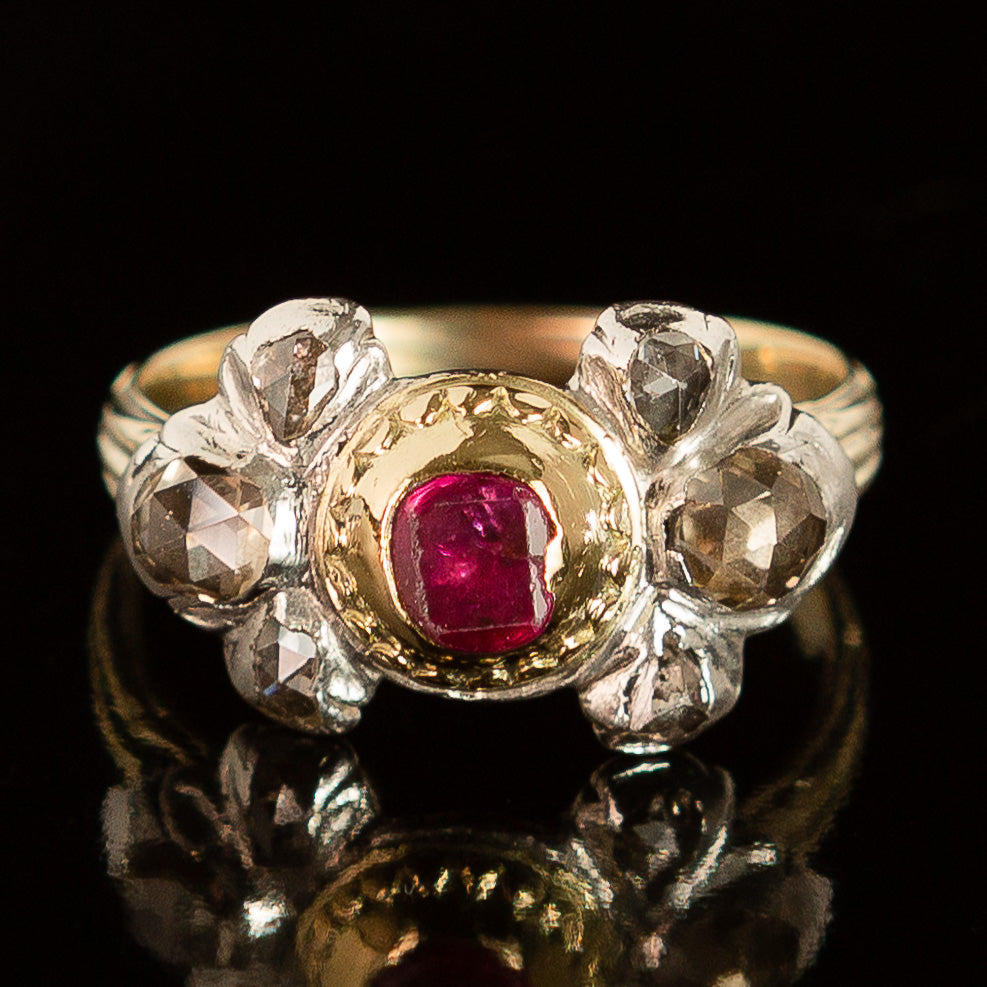A Glimpse into Antique Diamonds
Diamonds have a long history as captivating objects of fascination and desire. The way a diamond is cut can tell its story, reflecting the technology and style of an era. At Stórica Studio, we focus on sourcing antique or post-consumer recycled diamonds. From antiquity through the current day, about six billion carats of diamonds have been mined from the earth, often at great cost to people and the environment. By giving new life to previously mined diamonds used in jewelry, we are lessening the environmental impact of the jewelry we make and allowing our customers to create new stories with these beautiful gems.
You can tell approximately when a diamond was cut by the style of the cutting. Let’s dive into the different types of antique diamond cuts and what makes them unique.

Old Mine Cut
The Old Mine Cut, dates back to the 1700's and is one of the earliest forms of brilliant cut diamonds. These diamonds were cut by hand and it shows in their chunky facets and slightly asymmetrical shape. Old mine-cut diamonds usually have a squarish shape with rounded corners and large, flat facets. They are also characterized by a high crown, deep pavilion, and a large culet. Old mine cut diamonds aren’t as brilliant as modern cuts, but they have a beautifully soft, romantic sparkle, particularly under candlelight—the main form of illumination during that time.

Old European Cut
The Old European Cut emerged during the late 19th and early 20th centuries. As cutting technology progressed, cutters were able to achieve a more round, symmetrical shape than they did with the Old Mine Cut. You can identify an Old Euro by its small table, heavy crown, and large culet. It has 58 facets, similar to the modern round brilliant cut, but with broader and flatter facets that create a deeper, warmer sparkle—especially under soft lighting.

Rose Cut
The Rose Cut, named for its resemblance to an opening rose bud, originated in the 1500's and became popular in the early 20th century. It features a flat base with a dome-shaped crown, rising to a single apex. With anywhere from 3 to 24 facets, a Rose Cut diamond resembles the shape of a pyramid and gives off a subtle, romantic glow rather than a brilliant sparkle. Rose Cut diamonds are a wonderful choice for low profile rings, since they have a flat base. And, with all of their weight in the top of the stone, Rose Cut diamonds can have great finger coverage for their carat weight.

Transitional Cut
The Transitional Cut served as a bridge between the Old European Cut and the modern round brilliant cut. This cut emerged around the 1920s to 1940s, featuring a larger table, smaller culet, and longer, leaner facets compared to its predecessors. Transitional Cut diamonds offer a unique blend of vintage charm and modern brilliance.
Antique diamonds, with their unique cuts and character, offer a beautiful glimpse into the past. Whether it's the charming Old Mine Cut, the historic Old European Cut, the romantic Rose Cut, or the Transitional brilliance between old and new, each cut has its distinct beauty and story to tell. We feel honored to have the opportunity to work alongside you to give these beautiful stones new life in your new heirlooms.



